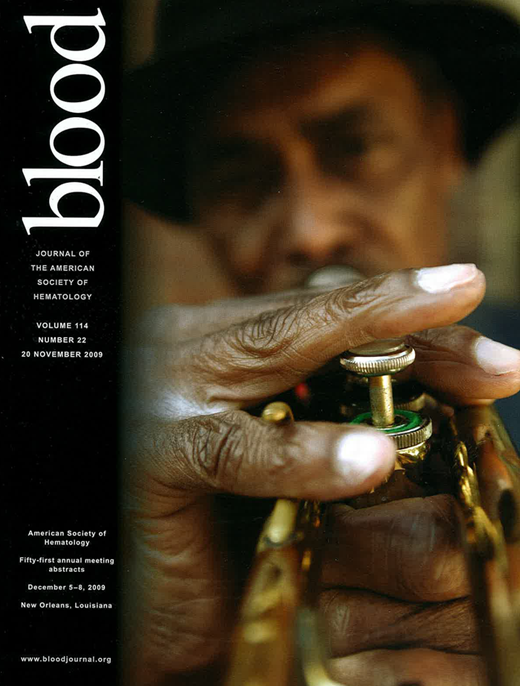Abstract
Abstract 2596
Poster Board II-572
The TEL/ABL (ETV6/ABL1) fusion gene is a rare aberration in human oncology. Only 19 cases of TEL/ABL-positive haematological malignancy were published so far, diagnosed as chronic myeloid leukaemia (n=9) or other type of chronic myeloproliferative disease (n=3), acute myeloid leukaemia (n=4) or acute lymphoblastic leukaemia (ALL) (n=3). Median age at diagnosis in the published cases was 48 years, with only 2 children (aged 22 months and 4 years) diagnosed thus far, both with ALL. Altogether, the TEL/ABL-positive leukaemias tend to be diagnosed at higher age suggesting post-natal origin and aetiology of this aberration - at least in a vast majority of cases. In the present study we report 3 new cases (aged 8 months, 5 years and 33 years) of ALL with TEL/ABL fusion gene revealed by screening of 392 newly diagnosed ALL patients (335 children and 57 adults). In two patients the mechanism of the TEL/ABL fusion was probably identical - part of the 9q34 including C-terminus of the ABL gene was inserted (in inverse orientation) into the TEL gene at the 12p13. The mechanism of changes was probably more complicated in the infant patient. Our data suggest that in this case part of the TEL gene was inserted into ABL and, moreover, the chromosome 1 was included in the complex cytogenetic changes. In all 3 patients array-CGH analysis was performed showing short deletion in the CDKN2A/CDKN2B locus at 9p21 in 2/3 cases. Analysis of all published data including our cases reveals poor prognosis of the TEL/ABL-positive acute leukaemias - overall survival in 2 years reaches only 15%. In particular, 4 patients (including 2 in the present study) were children (0-5 years), all of them diagnosed as ALL. Despite the prognosis of childhood ALL is generally better (overall survival reaching 80–90%) than the outcome of other haematological malignancies, only 1 out of the 4 reported paediatric cases survived more than 13 months from diagnosis (the 5 year old patient from the present study is now in complete remission for 16 months). On the other hand, survival of chronic leukaemias exceeds 50% corresponding to the outcome of TEL/ABL-negative chronic leukaemias in adults. Eosinophilia was suggested as a clinical hallmark of the TEL/ABL-positive leukaemia. However, we can not confirm the 100% correlation as 2/3 patients in this report lack this feature. In the two paediatric cases the course of the leukaemia was monitored using minimal residual disease (MRD). The data demonstrate excellent correlation of the MRD levels assessed by TEL/ABL transcript and immunoreceptor genes rearrangements quantification. Scrutiny of the neonatal blood spot (Guthrie card) revealed that in the 5 year old child the TEL/ABL rearrangement initiating the ALL was originated prenatally. The relatively long latency period suggests that secondary genetic hit(s) were required for the overt disease in this patient. The ALL diagnosed in the infant case at the age of 8 months was also very likely initiated prenatally, however, we were not able to locate the genomic breakpoint between the two genes and prove this hypothesis. The deletion at the CDKN2A/CDKN2B region in 2/3 presented cases (described also previously in TEL/ABL-positive ALL) suggests that loss of function in this region or in other tumour-suppressor loci (not necessarily detectable by cytogenetics) might contribute to leukaemogenesis of the primary aberration. In conclusion, we report three new cases of ALL characterised by TEL/ABL fusion and we integrate the new patients into already published data. For the first time we show detailed characterisation of the course of the disease including MRD data, we assess prognostic impact of the aberration using “meta-analysis” and we demonstrate prenatal origin of the TEL/ABL fusion.
The work was supported by grants MSM0021620813 and IGA-MZ NS1000-4.
No relevant conflicts of interest to declare.
Author notes
Asterisk with author names denotes non-ASH members.

